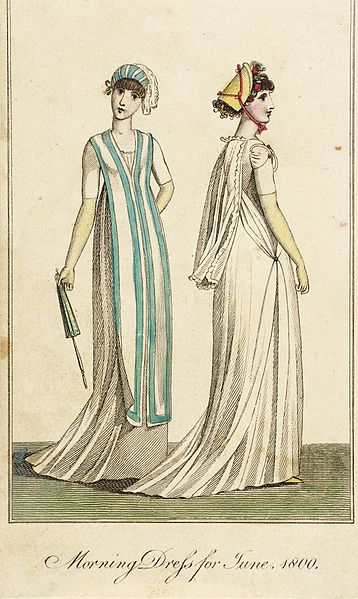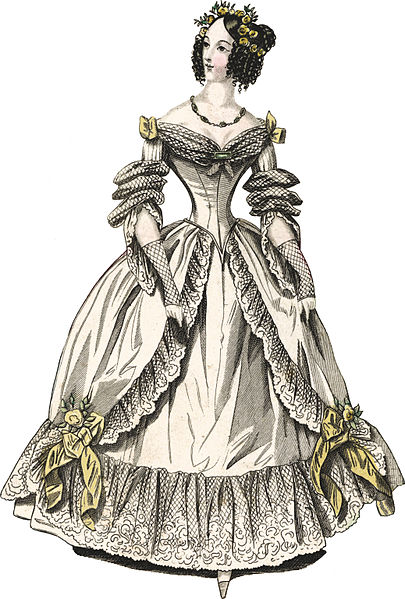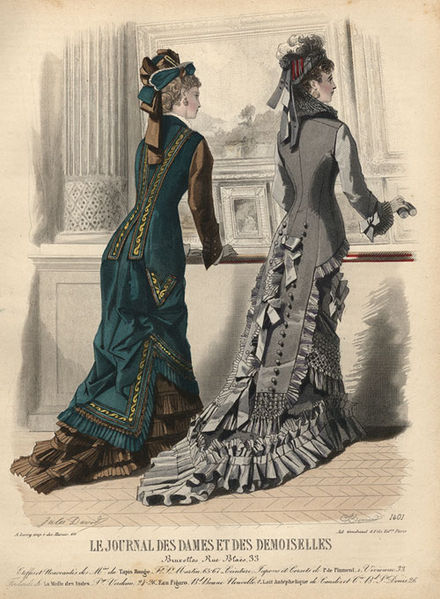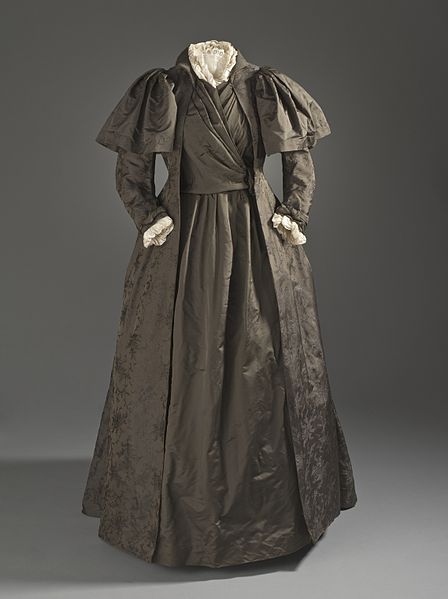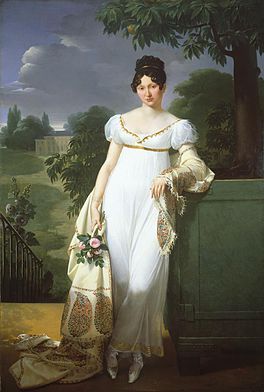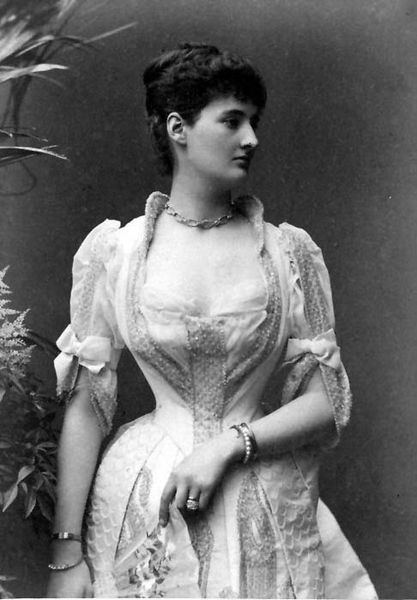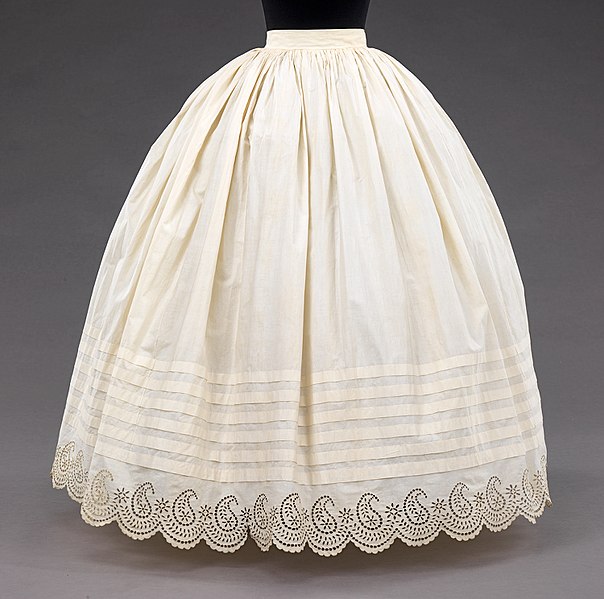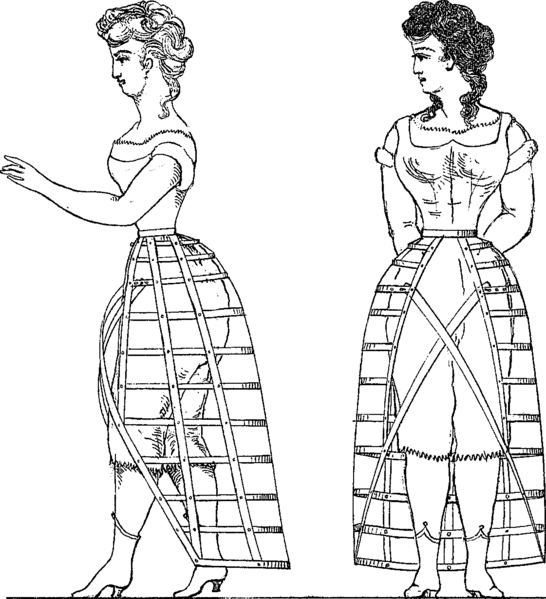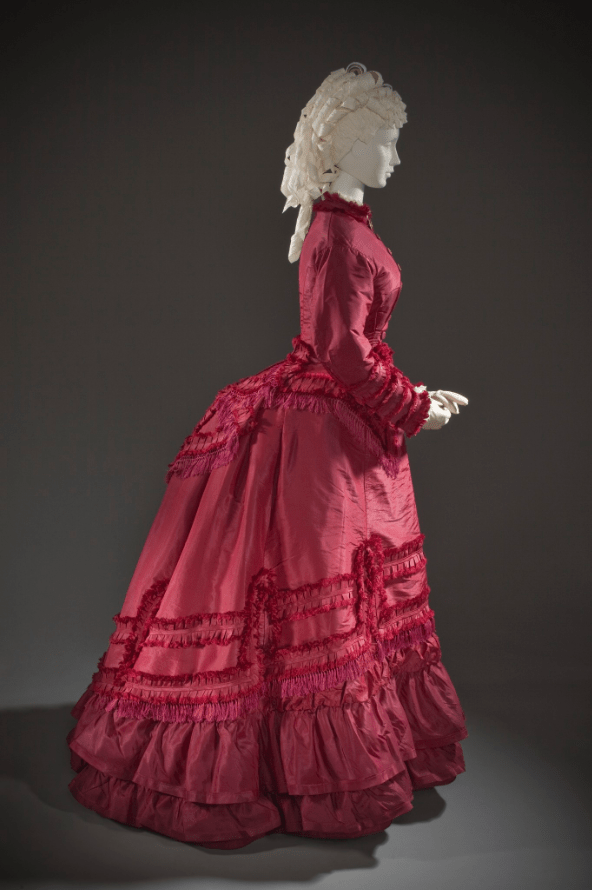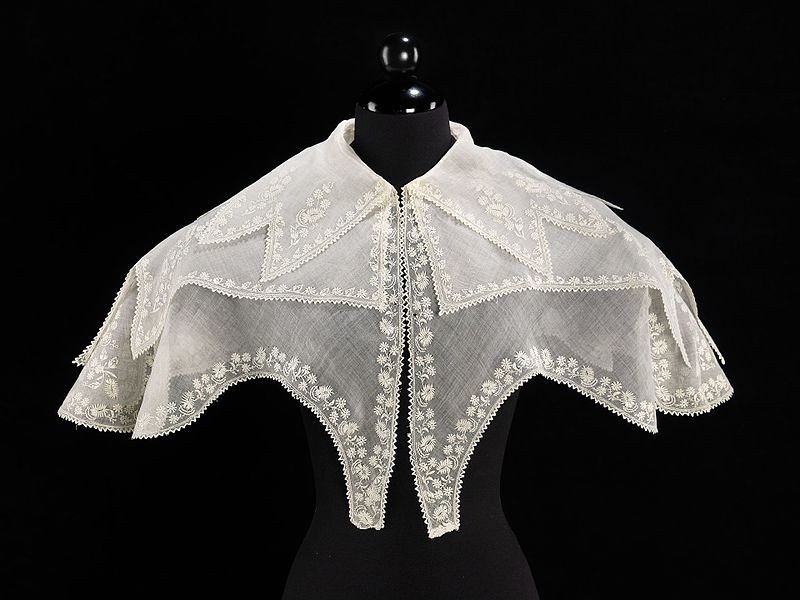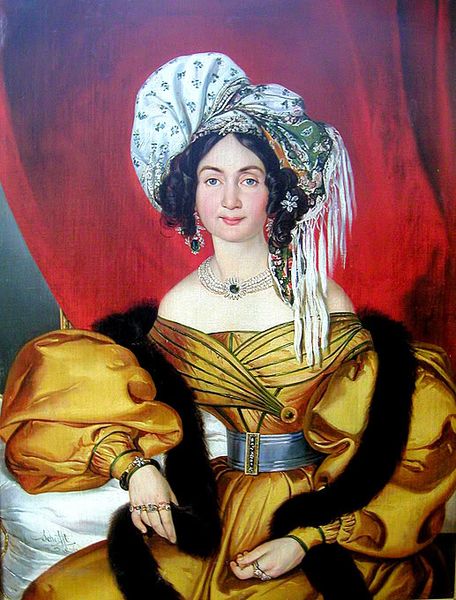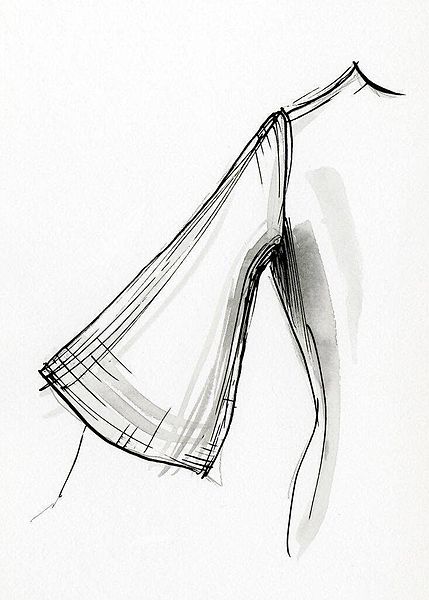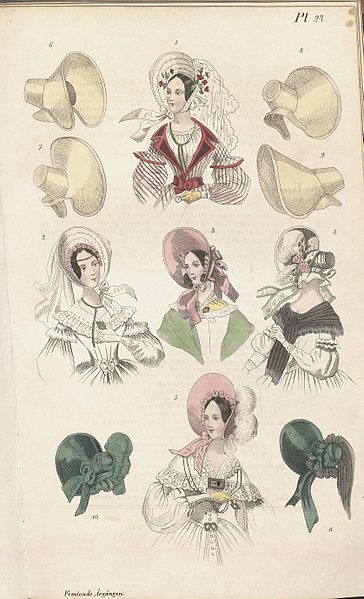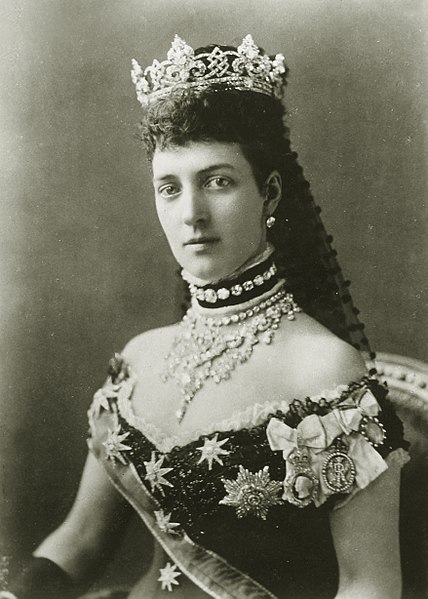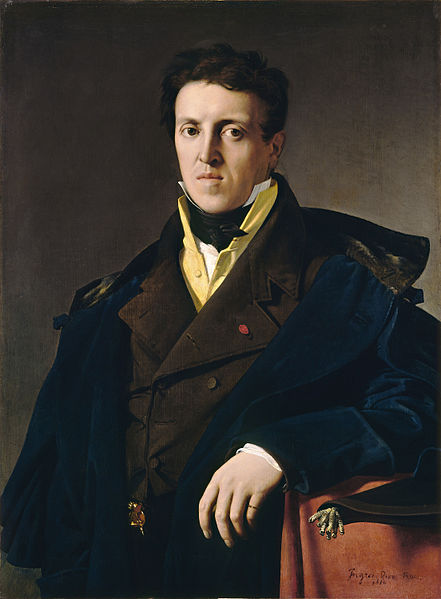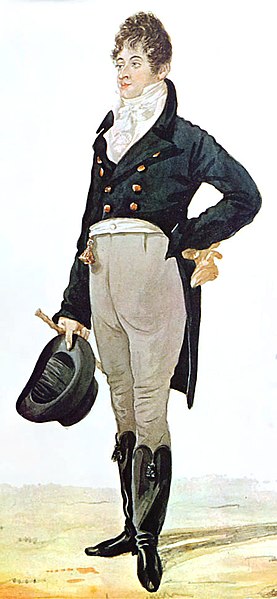After the French Revolution of the late 1700s, no one wanted to appear to be a member of the French aristocracy. The women of Paris became the first to abandon the ornate, overbearing, and constricting fashions of the 1700s. They chose to wear long flowing muslin dresses that imitated the classical designs of the Greeks and Romans. The restricting corset was temporarily abandoned in favor of a high-waisted, natural figure. However, the use of corset still prevailed most of the century as women embraced the Victorian style, which is a highly ornamental woman’s fashion style. This was also the era where trousers and tuxedos were introduced for men’s fashion.
People began using clothing as an expression of themselves rather than an indication of their social status. Before, the identity was changing and depended on what clothes you wore. But by the 1780s, the new natural style allowed the inner self to transcend the clothes.
Also, the Industrial Revolution had a great influence on fashion. The improvement in transportation and the creation of machines for manufacturing allowed fashion to develop faster. The first sewing machine emerged in 1790. Fashion magazines also became popular during this time period.
Beautiful Gowns and Dresses
Gowns during the 19th century had many different forms. In the early years following the French Revolution, gowns were sheer and gauzy, reviving the styles of Greco-Roman Neoclassical fashion. It embraced the natural form of the female body, as corsets were not used. By the 1830s, the fashionable feminine figure of having a small waist came back, so corsets were worn again. Rounded busts, full hips and sloping shoulders are emphasized by the gowns. Elaborately designed dresses were popular, as an influence on Victorian fashion. These styles can be seen even today in ballgowns (see these, for example).
Undress style
Fashions from 1795 to 1820 were quite different during most of the 19th century. This time, women started to follow the Greek and Roam styles with their loosely falling dresses that are gathered over the natural waist or under the bust. It was casual and informal, and the undress gowns are the type of attire women wore until noon or later on the day, depending on their social engagements. They are mostly made of white and almost transparent muslin. The fabric clung to the body, so it reveals what is underneath. However, the chemise, which is still the standard undergarment of the era, prevented the thin dresses from being fully transparent. They wore half dress when going out during the day or meeting with guests, and “full dress” when going to formal events. The “evening dress” was worn for evening affairs.
Morning dresses
In the early 1800s, morning dresses were worn inside the house. These are high-necked and long-sleeved. They are usually plain and undecorated. During the 1930s, morning dresses remained with high necklines, and shoulder width was emphasized with collars or tippets that rested on gigot sleeves.
Evening gowns
The concept of evening gowns started in this century and these gowns were often decorated and trimmed with lace, ribbons, and netting. During the early years, evening gowns were cut low, and arms were bare, covered with long white gloves. By the 1930s, gowns had wide necklines and short, puffed sleeves, and were worn with gloves. Evening gowns were worn off the shoulders and had wide flounces that reached the elbow during the 1840s.
Bouffant Gowns
Bouffant gowns were worn during special occasions in the 1860s. It was made of a wide, full skirt resembling a hoop skirt. It was popular all throughout the century.
Dresses with Long Trains
The trend of the long-trained gowns started in the 1870s. That time, the fullness of the skirt moved to the rear, where elaborate overskirts are placed and are supported by a bustle. The skirts on the rear are usually heavily trimmed with pleats, ribbons, flounces, frills and rouching.
Tea Gowns
The tea gowns are a woman’s informal, at-home dress for entertaining visitors. It was fashionable since the 1870s, and became mainstream in fashion during the 1890s. The gown was made of light fabrics, unstructured lines and does not need to be worn with a corset. It is influenced by the Pre-Raphaelites that rejected highly decorated Victorian styles, which was the mainstream fashion during most of the 19th century. This was also influenced by the Japanese kimono. The tea dress was only meant to be worn at home with close friends and family, but during the 1890s, it became acceptable to wear outside at fashionable summer resorts.
Empire Silhouette
The Empire silhouette was the key style during the Regency era. This comprises a light, long and loosely fitting dress, usually white and often sheer, and comes with a long rectangular shawl or wrap. It had a fitted bodice and offered a high-waist appearance. The shape of the dress helped lengthen the body. It waxed and waned in fashion for hundreds of years.
This silhouette was created during the late 18th century and referred to as the period of the First French Empire. The style was linked with France’s adaptation of Greek and Roman principles.
Undergarments and Frameworks
Chemise
During the Regency era (1811-1820), fashionable women wore several layers of undergarments. Chemises were worn by women, and it’s made of white cotton and finished with a plain hem. This was used to protect the outer clothes from perspiration, and it was washed more frequently. This prevented the sheer muslin or silk dresses from being so revealing. The typical chemise was worn throughout the century.
Corset
High-waisted classical fashions during the early years of the century needed no corset, but designers experimented with garments that served the same function as the modern brassiere. They used a corset-like undergarment that served to separate women’s breasts, called “divorce.” It was made of steel or iron, covered with a type of padding and shaped like a triangle.
Corsets returned about 1810, and they compressed the breasts from below to make them bulge upwards. That time, the corsets were made of satin, damask, silk and were reinforced with metal and whalebone. By the 1830s, corsets had gores to individually cup the breasts.
Petticoat
Petticoats in the early 19th century had a scooped neckline. It was sleeveless and fitted in the back with hooks, buttons and eyelets. It was often worn between the underwear and the outer dress, and the lower edge of the petticoat was intended to be seen. And since the petticoat’s hem is seen, they decorated it with lace, tucks, ruffles or ornamental designs.
Crinoline
The crinoline is a cage-like structured petticoat that was designed to hold out a woman’s skirt. This had grown to its maximum dimensions by the 1860s. It was dome shaped in the early 1860s. It got so big and it was also dangerous to wear if the women weren’t careful. There are instances of women who died or got injured because their hoop skirts caught fire or the hoops were caught in machinery. Around 1864, the shape of the crinoline began to change – the front and sides contracted, leaving volume only at the back.
After the decline of the huge crinoline, the crinolette followed. It was a hybrid of the crinoline and the bustle, with the caged structure only extending down to the back of the legs. This became popular during the mid-1860s.
Bustle
The bustle is an under framework, like the crinoline and crinolette, that was used to expand the fullness at the back portion of the dress. The crinolette became a predecessor of the bustle, as it created a shape very similar to the shape produced by the bustle. The bustle was developed during the 1860s, after the overskirts was draped up towards the back and some kind of support was needed for the new shape. During the 1870s to 1880s, the bustle replaced the crinoline completely. Those two decades were informally called the bustle era, where women’s clothing was protruded at the back, draped, heavily trimmed and highly ornamental.
Outerwear
Women’s fashion during the 1800s gave way to different types of outerwear.
Shawls
Since clothes became thinner during the early years, warmer outerwear became fashionable, especially during colder seasons. Shawls were very popular. Throughout the period, the Indian shawl was favored as sheer muslin and light silk dresses were common.
Pelerines
Pelerines were popular during the 1830s for women. It’s a cape-collar that covers the shoulders and is typically made of sheer or thin muslin.
Tippets
Tippets are scarf-like piece of clothing worn over the shoulders. They were used for adding warmth, or for emphasizing the shoulders. Later on, it was worn by Anglican priests and other religious ministers.
Mantelet
The mantelet is a short cape popular in the early years of the century and was eventually lengthened. Later on, it evolved into a shawl.
Cloaks
Since the 1820s, cloaks and full-length coats were worn by women as outerwear during cold or wet weather.
Sleeves
Different styles in sleeves became popular in women’s clothing during the century.
Juliet sleeves
The Juliet sleeves is a long, tight sleeve with puff at the top. It was inspired by the Italian Renaissance and got its name from Juliet – Shakespeare’s tragic heroine. This style was popular during the Empire period, and especially with the gauzy muslin dresses of the time, and became trendy until the 1820s.
Gigot sleeves
The 1830s gave way for the distinctive gigot or “leg of mutton” sleeves that are often part of gowns with large full conical skirts with narrow low waist. The sleeves make it bulky above the waist, and the petticoat makes the below part also big so as to make the waist look smaller than it actually is. Gigot sleeves made a comeback during the 1890s, with the sleeves growing bigger every year until it reached its largest size around 1895.
Pagoda sleeves
Pagoda sleeves became popular in the 1860s. It was a wide, bell-shaped sleeve worn over an engageante or false undersleeve. This was narrower at the shoulder, and very wide at the wrist, exposing parts of the undersleeve. Nowadays, the term pagoda sleeve has been used to describe any funnel-shaped sleeves.
Bonnets
Fashion bonnets were worn by women during the 1830s, and these had small brims that revealed the face. During the middle of the century, bonnets with high brims and elaborate trimmings became very fashionable. Bonnets like these are made to accessorize a dress or gown. Middle-class women would often have at least two bonnets, one for the summer and one for the winter. This started the tradition of an Easter bonnet. Wealthier women had many bonnets.
Garibaldi shirt
The Garibaldi shirt was an iconic women’s fashion of the 1860s. It’s a bright red woolen garment popularized by Empress Eugénie of France. After Italian revolutionary Giuseppe Garibaldi wore it to England in 1863, the shirt became popular there. These are only worn above the waist with a chemisette, and paired with a skirt with belt at the natural waistline. This piece of clothing became the direct ancestor of today’s women’s blouse.
Gloves
Gloves were fashionable women’s accessories by the 19th century. It was always worn outside the house, and was worn indoors at social gatherings and formal occasions. When short-sleeved gowns or dresses are in fashion, the gloves get longer to above the elbow. Sometimes, garters fasten longer gloves.
Choker necklace
The choker necklace, which made a comeback in the 20th and 21st century, was first fashionable during the 1870s. The modern choker necklace originated as a velvet ribbon tied high around the neck. During the 1880s, Queen Alexandra Princess of Wales popularized the choker necklace. She wore jeweled collars to disguise a scar on her neck, and it became trendy for most women.
Mens Fashionable Coats
Coats are commonwear for men. The coats during the early years of the century were like those of the previous period. But during the 1920s, coats began to be made in a new way. Coats had tails and lapels that were cut separately and then attached to the coat to ensure a better fit. The tails were narrow, pointed and fell just below the knee. They are also padded at the chest and waist.
Different types of coat for men became fashionable during the decade, such as:
Waistcoats
During the 1800s, waistcoats were high-waisted and squared off at the bottom. These were often double breasted and had stand collars and wide lapels. As time passed by, it came in a broad variety of styles. During 1805, waistcoats with large lapels that overlap began to fall out of fashion. Gradually, waistcoats needed to be buttoned up high on the chestand it became less visible. Waistcoats with high collars were fashionable until 1815, as collars were gradually lowered to make way for the shawl collar.
Greatcoat
Greatcoats or overcoats were fashionable, and were often made of contrasting collars of fur or velvet.
Frock coat
In the 1920s, frock coats had sleeves that were gathered or pleated into a slightly puffed shape. Wool or velvet are common materials, and colors like midnight blue and bottle green are very fashionable. It remained fashionable until most of the century, but shorter versions of it were developed during the 1870s.
Sack coat
The sack coat became fashionable during the 1850s for leisure activities. Gradually, over the next 40 years, it replaced the frock coat and became the predecessor to the modern suit coat.
Dandy style
A slang word that time, dandy refers to a clothes-obsessed man who takes pride in natural excellence, tailoring and refined dressing. It first appeared in the 1790s and continued to be popular throughout the 19th century. The model dandy in British societies was Beau Brummell, who was known for his immaculate personal cleanliness, never unpowdered or unperfumed, immaculate linen shirts with high collars, exquisitely tailored plain dark coats and perfectly tied cravats. He also led the move from wearing breeches to wearing tailored trousers or pantaloons.
Men’s Trousers
Breeches were still worn by men during the 19th century, but as time went on, it only became common in courts. They became longer, and were eventually replaced by trousers or pants as fashionable street wear. The popularity of trousers grew during the French Revolution. Breeches symbolized the upper class and the trousers were worn by the working class revolutionaries. Rebels back then were called “sans-culottes” or “people without breeches.”
During the 1920s, trousers underwent notable changes. The fit of the trousers were loosened slightly (to be distinguished from breeches), and flared out at the hip with the help of small pleats. Full-length light-colored trousers are worn during the day, and dark-colored trousers were worn as evening wear.
By the 1930s, trousers began to have a modern fly-front closure. Full-length trousers became popular with men around the 1860s, until they were worn for most occasions by the 1880s.
Ditto suit
The ditto suit is an attire for men consisting of a coat, waistcoat and trousers. It was a novelty fashion during the 1860s, but it grew in popularity during the 1870s. During the 1880s, the usual ditto suit consisted of a sack coat, with matching waistcoat (or vest) and trousers. This became an informal alternative to the ensemble of frock coat, waistcoat and trousers.
Dinner Jacket
The dinner jacket, or tuxedo, became a less formal and more relaxed alternative to the formal coat. In Britain, the dinner jacket featured a shawl collar with satin or silk facings and one to two buttons. By the 1890s, it generally had a single button. This jacket is a dress code for “dressing for dinner” at home or in a men’s club. It was worn with a white shirt and a dark-colored tie.
Boots
Different styles of boots emerged during the 19th century.
Hessian boots
Hessian boots were military riding boots worn by German soldiers in the 18th century, but became popular in England during the Regency period. These boots have heart-shaped tops and tassels, and became widely worn by civilians throughout the century.
Wellington boots
The Wellington boots were originally a type of leather boots adapted from Hessian boots. It had knee-high tops in front and was cut lower at the back. They were popularly worn by the Duke of Wellington who defeated Napoleon in 1815. Since then, these boots became a staple as practical shoes for the British aristocracy and the middle class. Nowadays, the name Wellington boots apply to rubber waterproof boots mostly used outdoors.
Cowboy boots
Boots have been a part of equestrian life for many centuries. During the Industrial Revolution, the Wellington boot became popular for cowboys in the USA until the 1860s. During the cattle drive era of the 1860s to 1884, cowboys didn’t want to ruin a good pair of dress boots as they worked, so they created more decorative dress boots. The style of these boots became prevalent and were even adapted for working boots, making the Wellington out of fashion. The American-style boots were adapted by bootmakers in Texas, Kansas and Oklahoma. Today they are worn for all kinds of professions ranging from modern day cowboys to the business dress.
Top hats
Top hats have become an accessory worn by men and women for outdoor activities. It gradually became taller, and by the 1850s, they achieved the stovepipe shape. It was worn with formal dress back then. During the 1860s, top hats evolved to become the very tall “stovepipe” shape.
There are certainly a wide variety of styles and fashions from the past. Fast forward to today and we have many options like sneakers, sports bras, athlete wear and more.
Aesthetic Dress Movement
The late 1800s Aesthetic Dress Movement emphasized comfort and natural beauty above rigid, uncomfortable fashions. This trend, influenced by the Aesthetic trend in art and literature, opposed tight corsets, thick crinolines, and bustles and advocated for a more natural silhouette. The costumes had wide, flowing lines inspired by medieval, Renaissance, and classical designs.
They were made from natural fabrics like cotton and wool, and used softer, more muted colors compared to the bright, synthetic dyes popular in mainstream fashion. This trend changed the style and rethought women’s fashion to emphasize health, comfort, and artistic expression. It laid the groundwork for subsequent reform in women’s fashion and was a precursor to the more relaxed styles of the early 20th century.
Conclusion
Fashion in the 1800s changed with social and cultural changes, reflecting a distinct progression in attire and aesthetics. The more ornate and structural Victorian design replaced the elegant and simple Empire silhouette, influenced by classical times. Women’s design evolved from high-waisted, flowing gowns to ornate dresses with crinolines, bustles, and embellishments. Men’s dress moved from lavish early 1800s fashions to more meaningful and official clothes, including the suit.
Haute couture and fashion began in the 1800s. Fashion industry and fashion designers as artists emerged in the late 20th century. The sewing machine made fashion more accessible by revolutionizing clothing manufacture.
From romanticism and regency to industrialization and urbanization, 1800s dress reflected societal changes. This century established contemporary fashion style and industry, paving the ground for the major changes of the 20th century.

